Abstract
The cueing effects of interviewer praise contingent on a target behavior and expectation of behavior change were examined with six observers. Experiment I investigated the effect of cues in conjunction with expectation. Experiment II assessed the relative contributions of cues and expectation, and Experiment III examined the effect of cues in the absence of expectation. The frequencies of two behaviors, client eye contact and face touching, were held constant throughout a series of videotaped interviews between an “interviewer” and a “client”. A within-subjects design was used in each experiment. During baseline conditions, praise did not follow eye contact by the client on the videotape. In all experimental conditions, praise statements from the interviewer followed each occurrence of eye contact with an equal number of praises delivered at random times when there was no eye contact. Three of the six observers dramatically increased their recordings of eye contact during the first experimental phase, but these increases were not replicated in a second praise condition. There were no systematic changes in recorded face touching. Witnessing the delivery of consequences, rather than expectation seemed to be responsible for the effect. This potential threat to the internal validity of studies using observational data may go undetected by interobserver agreement checks.
Keywords: witnessing consequences, observer bias, reliability, interobserver agreement, human observers
Full text
PDF
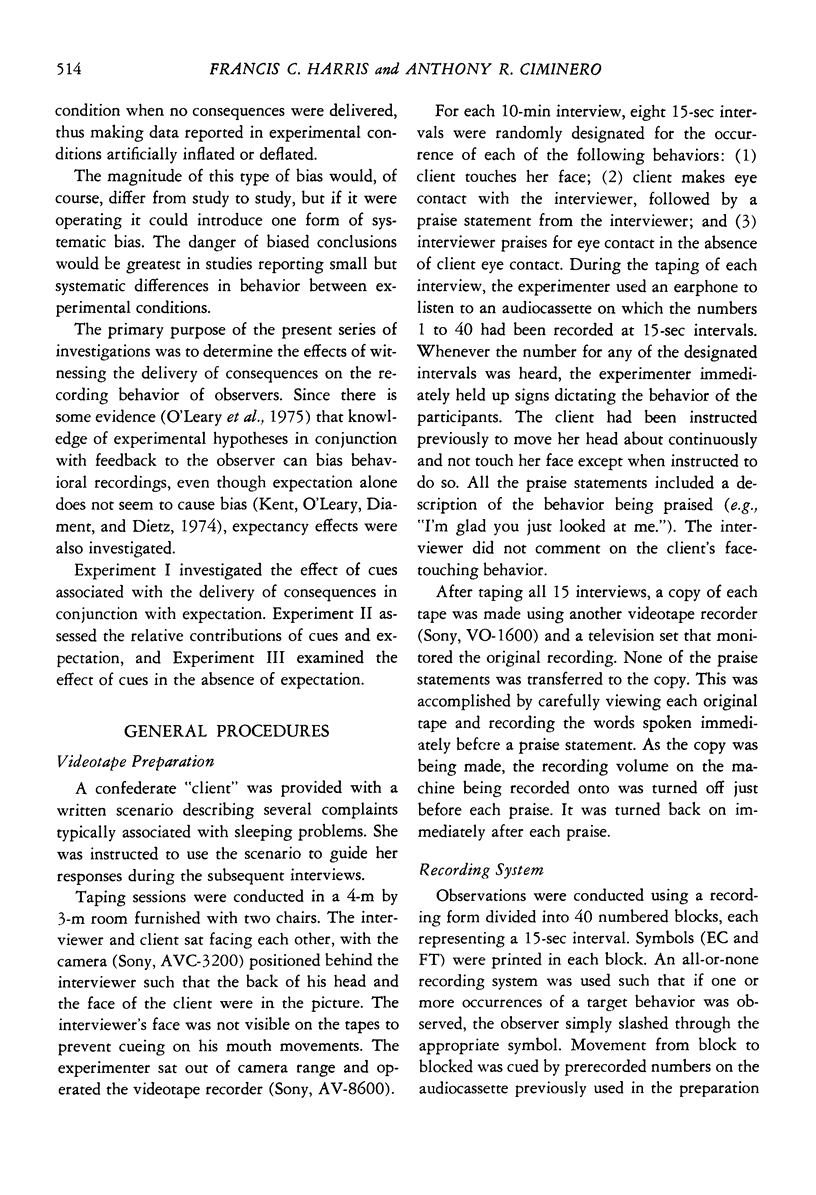
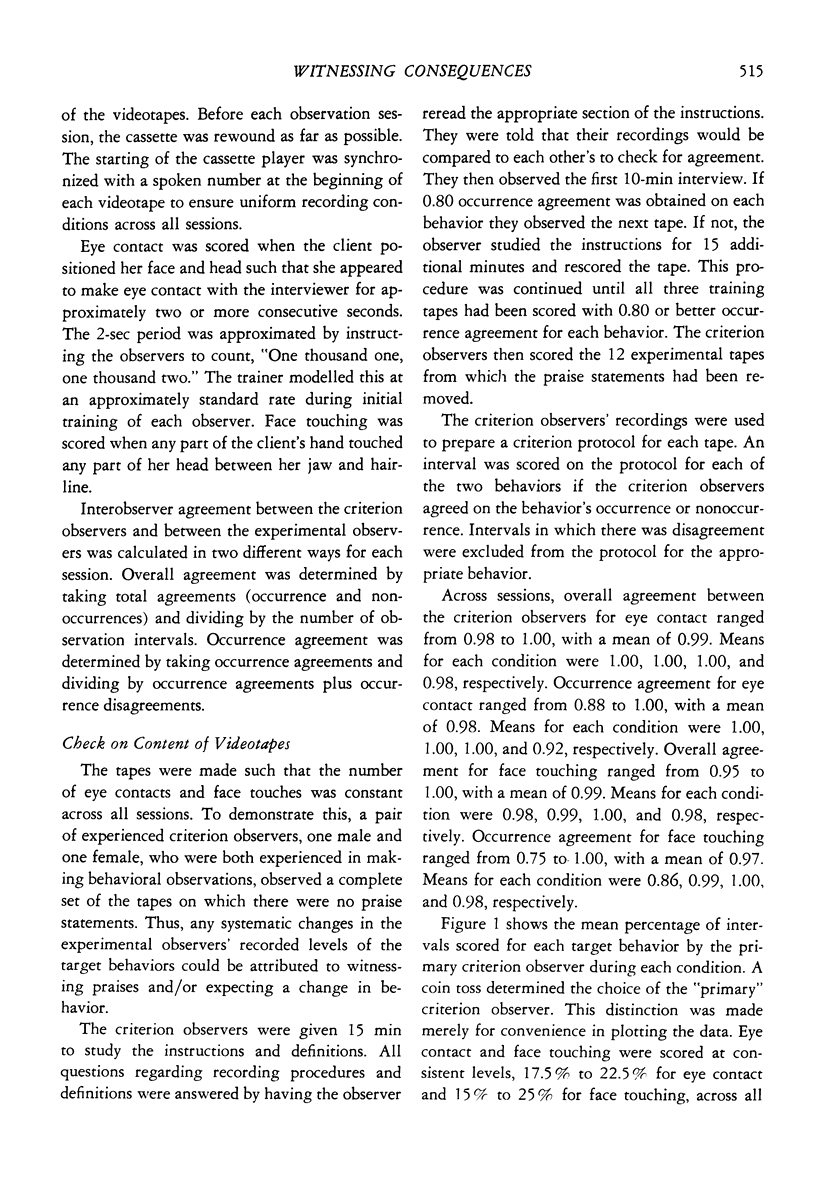
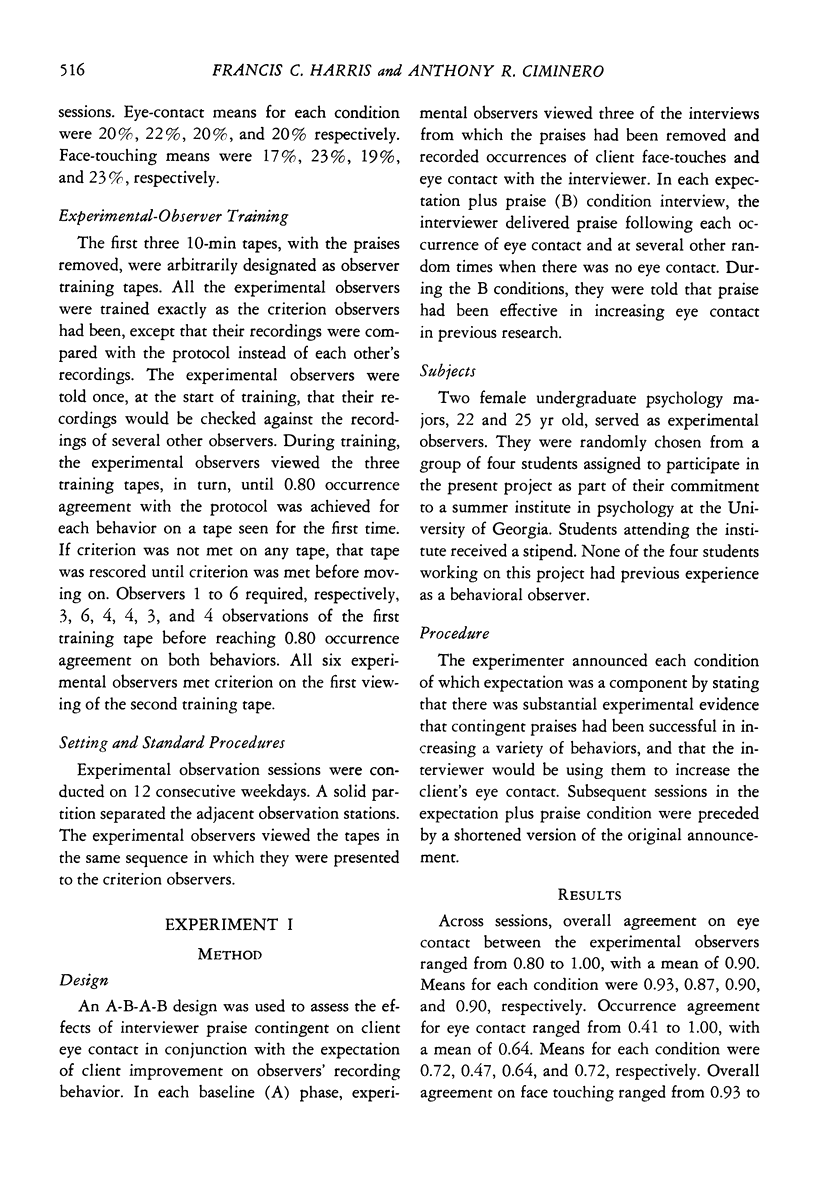
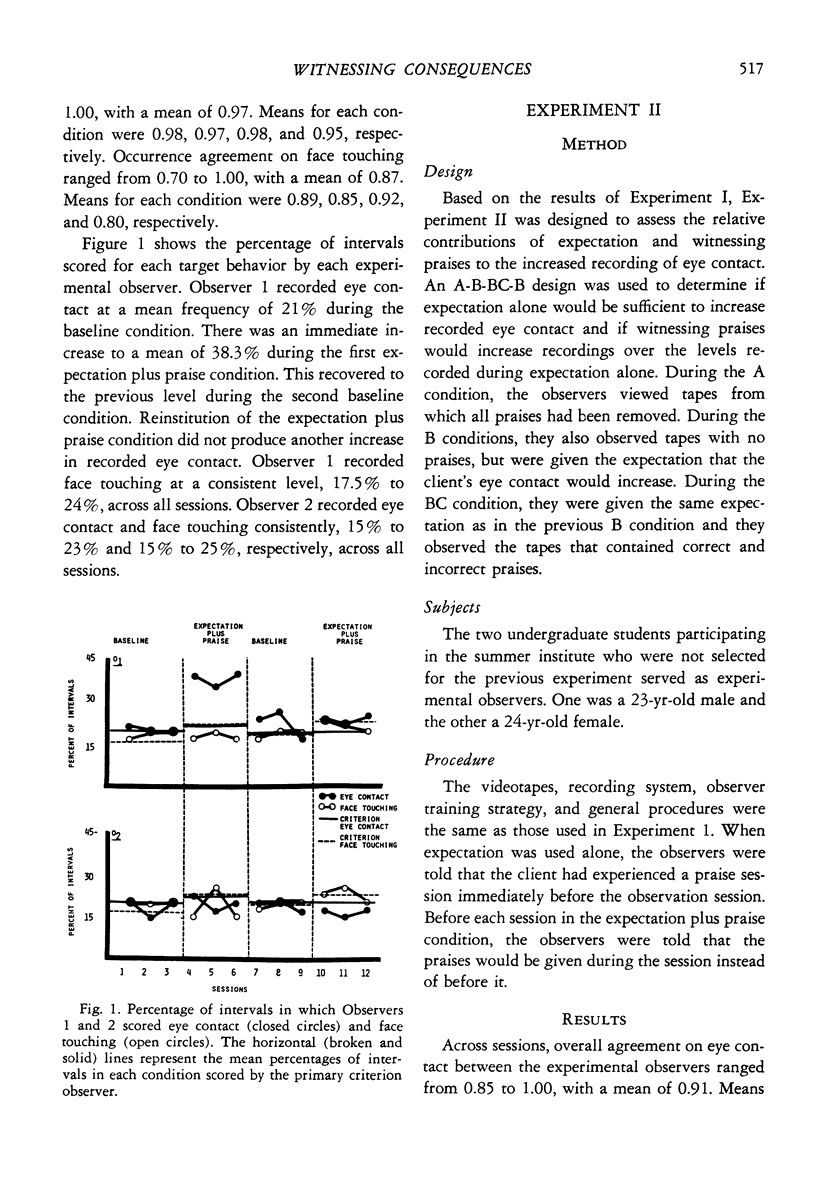
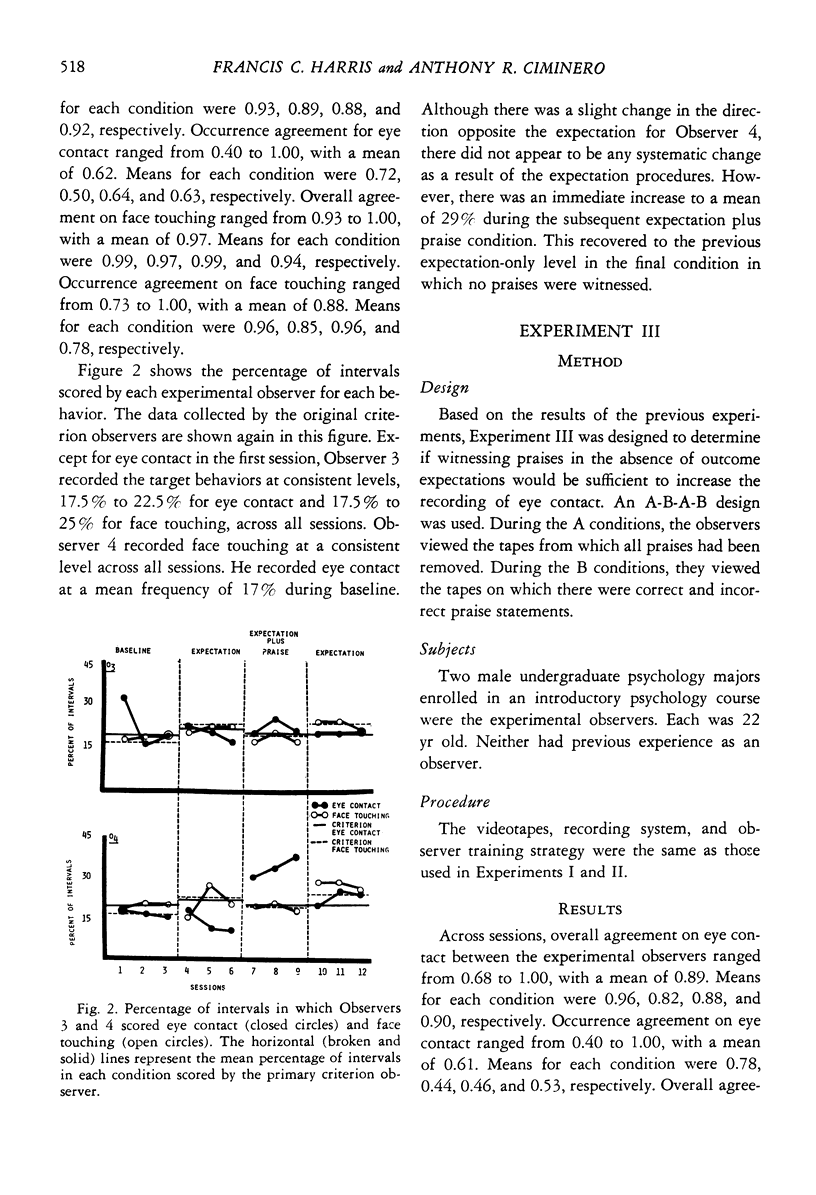
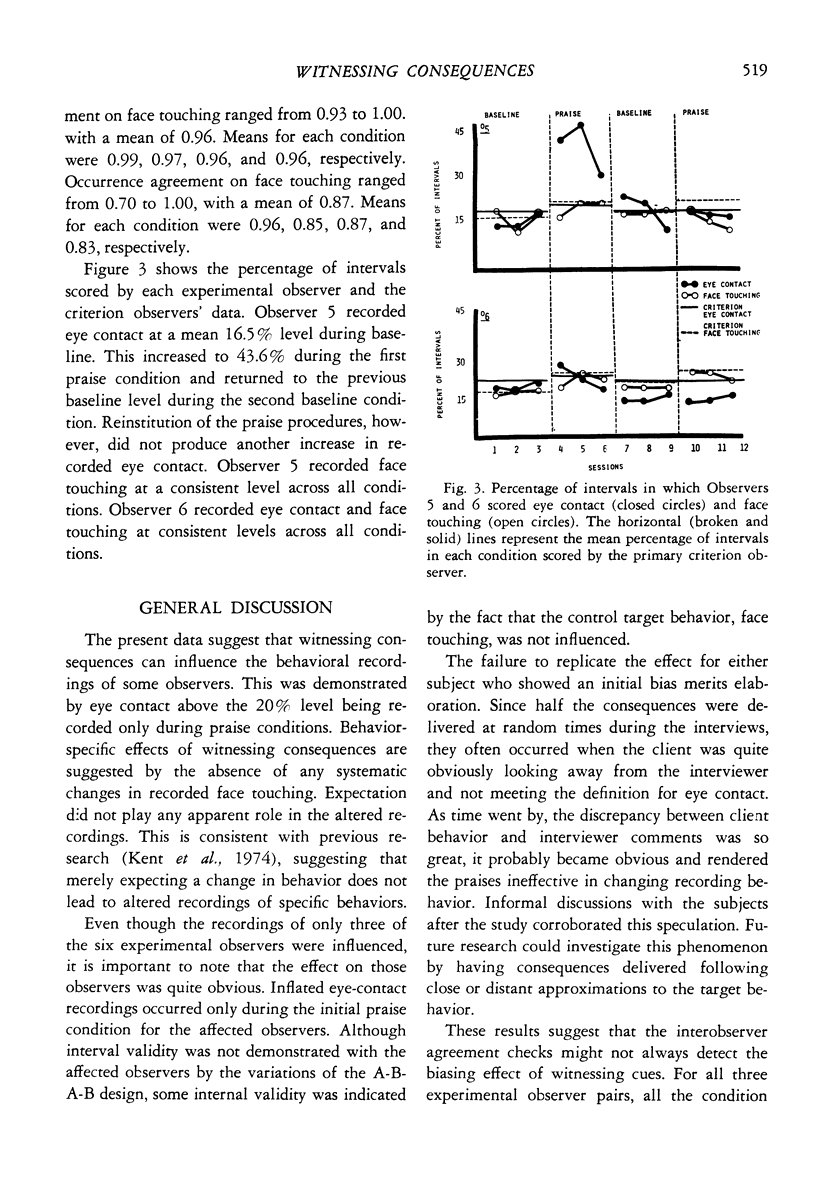
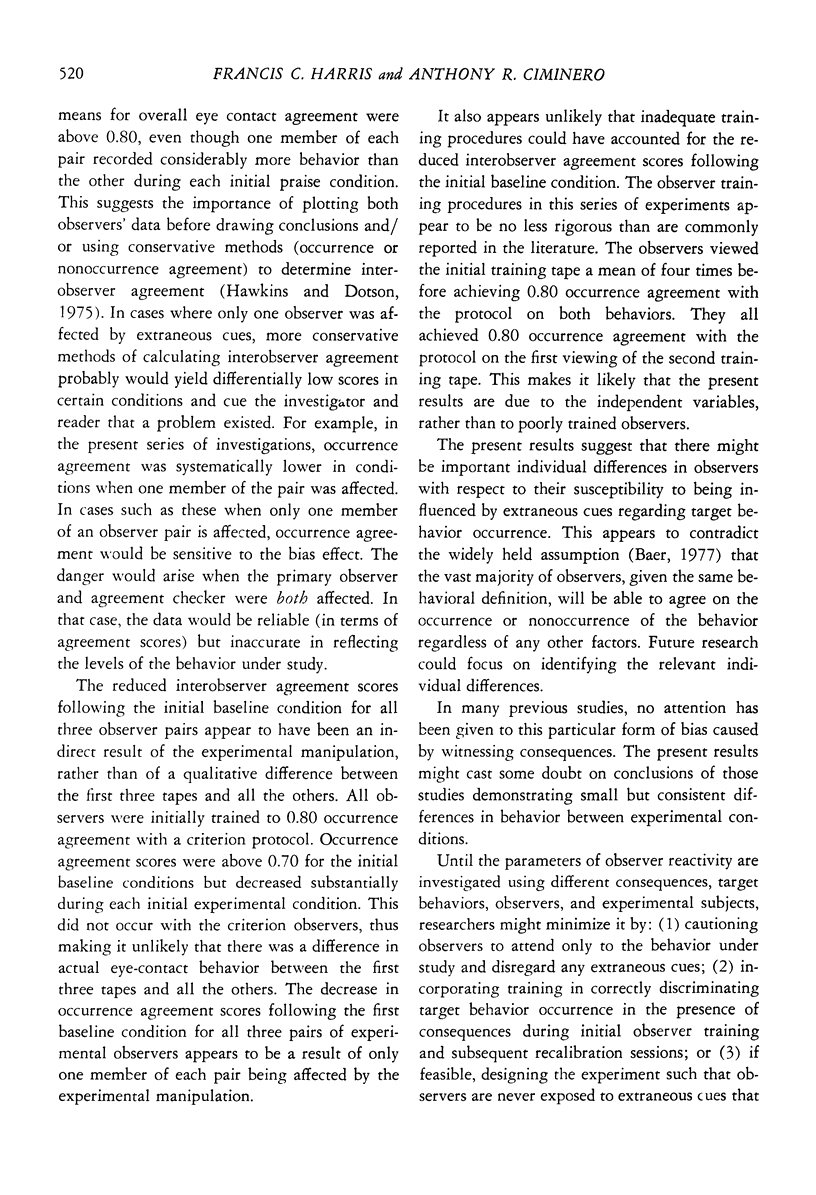
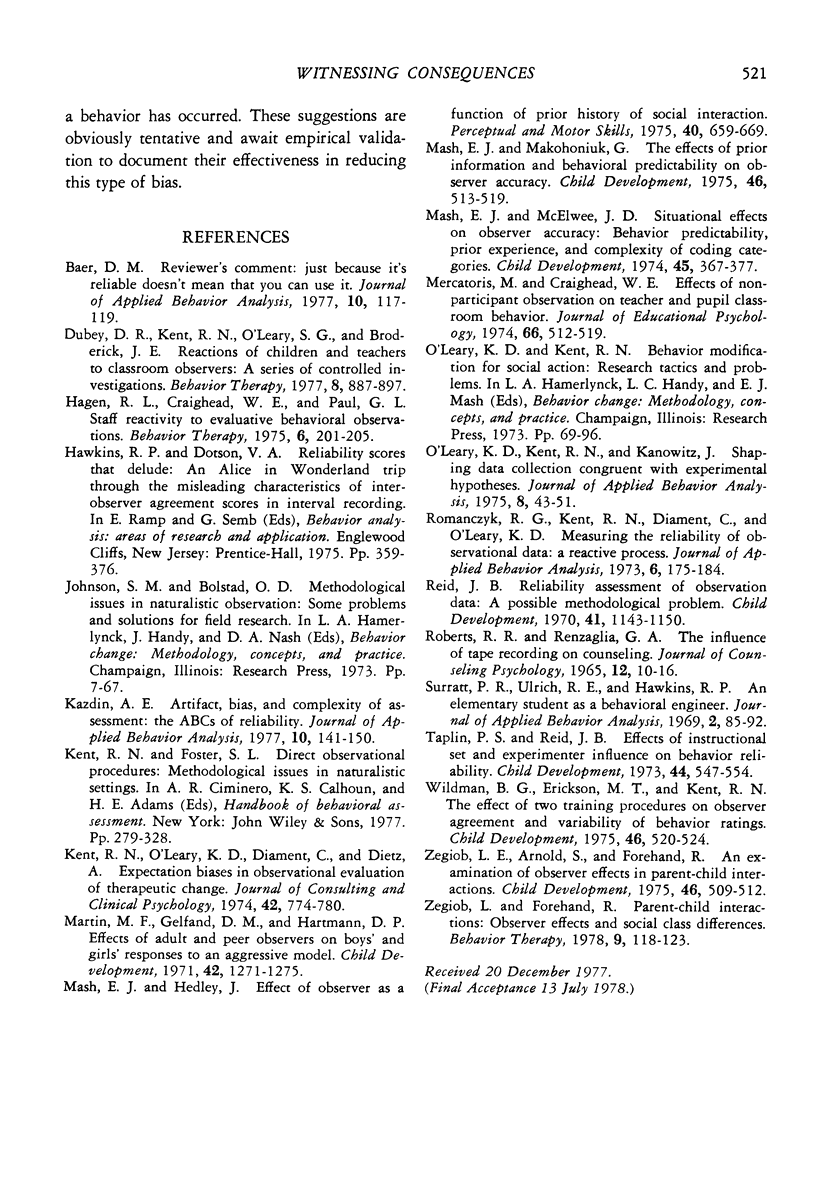
Selected References
These references are in PubMed. This may not be the complete list of references from this article.
- Baer D. M. Reviewer's comment: just because it's reliable doesn't mean that you can use it. J Appl Behav Anal. 1977 Spring;10(1):117–119. doi: 10.1901/jaba.1977.10-117. [DOI] [PMC free article] [PubMed] [Google Scholar]
- Kazdin A. E. Artifact, bias, and complexity of assessment: the ABCs of reliability. J Appl Behav Anal. 1977 Spring;10(1):141–150. doi: 10.1901/jaba.1977.10-141. [DOI] [PMC free article] [PubMed] [Google Scholar]
- Kent R. N., O'Leary K. D., Diament C., Dietz A. Expectation biases in observational evaluation of therapeutic change. J Consult Clin Psychol. 1974 Dec;42(6):774–780. doi: 10.1037/h0037516. [DOI] [PubMed] [Google Scholar]
- Martin M. F., Gelfand D. M., Hartmann D. P. Effects of adult and peer observers on boys' and girls' responses to an aggressive model. Child Dev. 1971 Oct;42(4):1271–1275. [PubMed] [Google Scholar]
- O'leary K. D., Kent R. N., Kanowitz J. Shaping data collection congruent with experimental hypotheses. J Appl Behav Anal. 1975 Spring;8(1):43–51. doi: 10.1901/jaba.1975.8-43. [DOI] [PMC free article] [PubMed] [Google Scholar]
- Romanczyk R. G., Kent R. N., Diament C., O'leary K. D. Measuring the reliability of observational data: a reactive process. J Appl Behav Anal. 1973 Spring;6(1):175–184. doi: 10.1901/jaba.1973.6-175. [DOI] [PMC free article] [PubMed] [Google Scholar]
- Surratt P. R., Ulrich R. E., Hawkins R. P. An elementary student as a behavioral engineer. J Appl Behav Anal. 1969 Summer;2(2):85–92. doi: 10.1901/jaba.1969.2-85. [DOI] [PMC free article] [PubMed] [Google Scholar]


